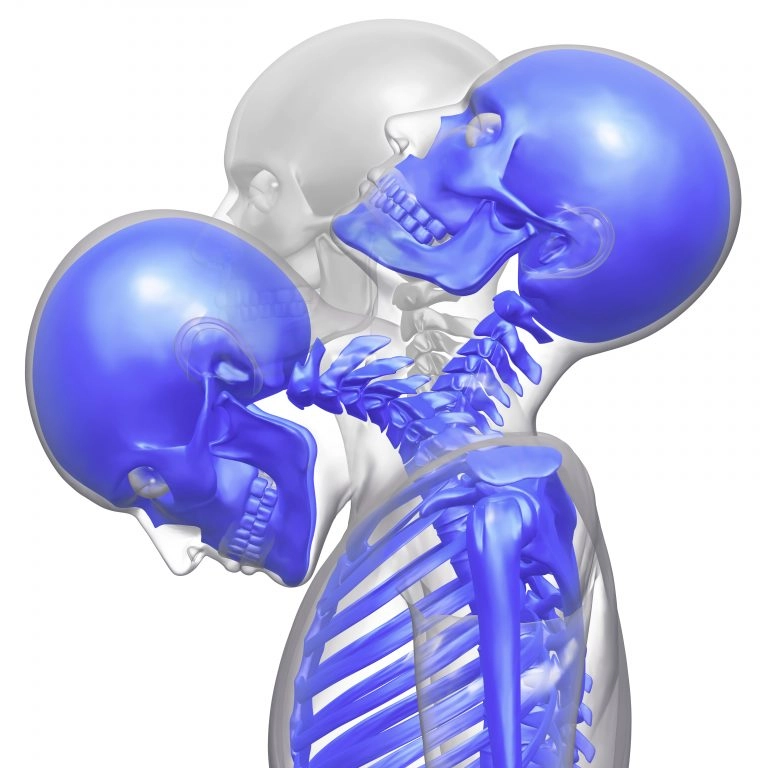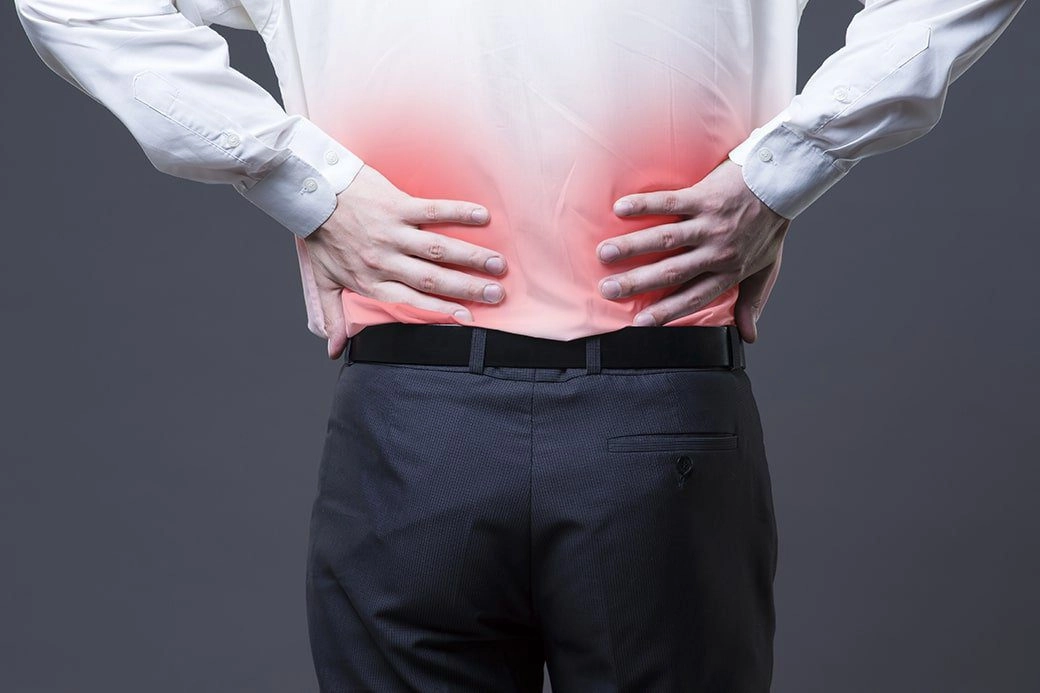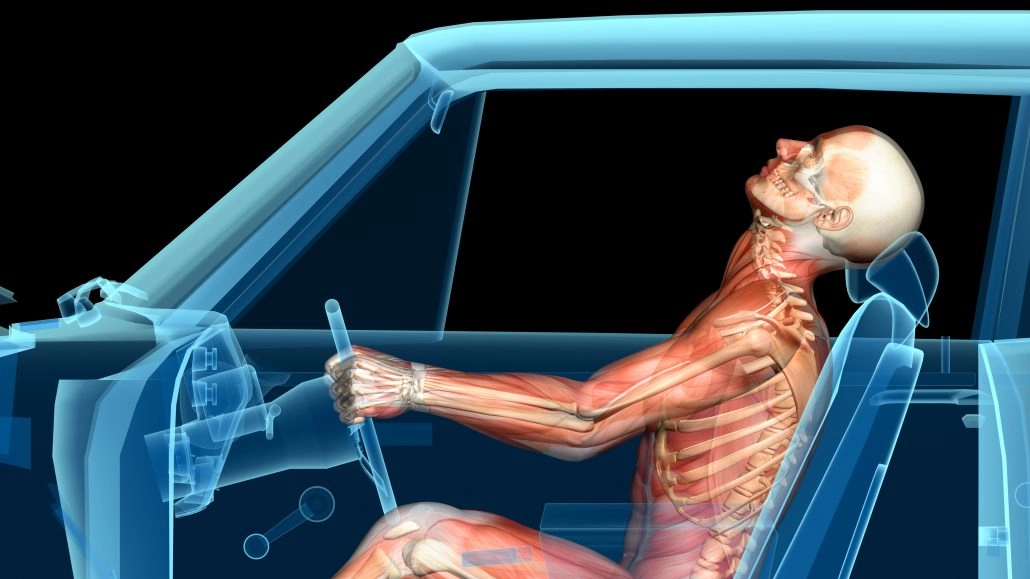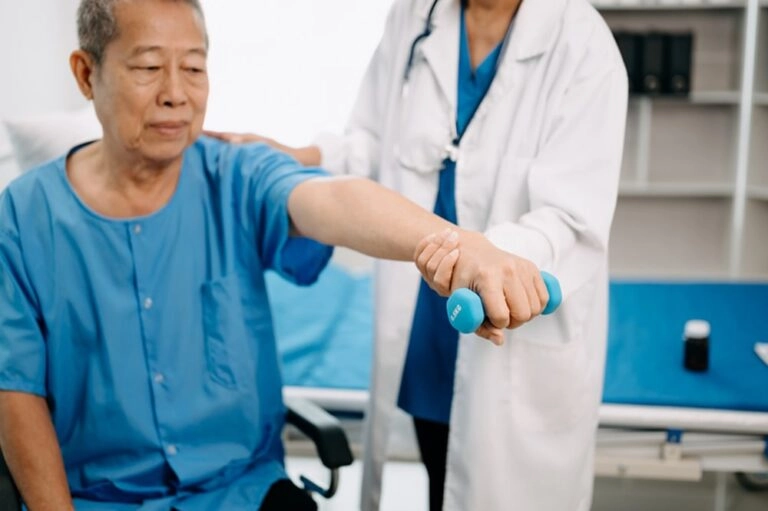No one wants to be involved in a car or motorcycle accident, but regardless of your driving habits, or how advanced the safety features on your car might be, the average driver will be involved in three to four auto accidents in their lifetime. In 2015, the National Highway Traffic Safety Administration states there were nearly 6.3 million police-reported traffic accidents and almost 2.5 million people injured. This would equal someone becoming injured due to a crash about every 7.5 minutes each day.
While our cars are safer than ever, they can only do so much, and other drivers might not have the experience that you do. Knowing what to do if you are involved in an accident will not only save lives, but can help to maximize your own safety while minimizing frustration.
Step #1 – Stop/Check Injuries/Call 911
The law in Alaska requires that you stop your vehicle (assuming it hasn’t been disabled) as soon as possible, but only if you can do so safely. It is okay to pull over to a turnout or curb to avoid being hit from behind, but don’t drive very far.
Check yourself, the passengers in your car (if any), and then check the other vehicle or pedestrians, if applicable. The law states that you must offer “reasonable assistance” to anyone who has been injured.
If there are injuries, call 911. Be as calm as possible so the dispatcher can understand you. Give the address or general location, which way you are traveling (Northbound? Southbound?) and tell the dispatcher if anyone has been injured.
If there are no injuries, or if this is only a property damage report, such as your car hitting a tree or fence, you must give the homeowner or other drivers your full name, address, and your car’s license plate number.
Step #2 – Take Notes About the Scene
Don’t put yourself in danger for a few photos, but if it is safe to do so, take some pictures with your cell phone (video is also good) of your car, the other car, and the general scene or reason that caused the accident. For example, if the car next to you swerved because of a deer, but they hit the deer anyway and also sideswiped your car, take pictures or a video of the deer or icy road and whatever else you think might matter later. If possible, write down or film witnesses stating what they saw as well as their names, addresses, and phone numbers for future reference.
You will want this information because time has a way of changing what we remember. At the moment, it might feel like you would never forget this incident, but it’s the little things that slip from our minds over time. It will also be very difficult for the other driver to change their story from the one they have told you at the accident scene if you have them on video. However, if they object to a video being taken, it would be wise not to do so.
If you are too injured to do this, you can have a passenger do it for you, or if you are alone, don’t worry about this step. It can help in the future to determine fault, but nothing is more important than your health and safety.
Step #3 – File a Police Report
In certain situations, you must report an accident to the police. The circumstances that will require you to file a police report include:
- If there are injuries to any person, including your own.
- If there appears to be property damage of more than $2,000.
- If the accident occurred within city limits (you would call or visit the city police).
- If the accident occurred outside city limits, call the Alaska Department of Public Safety.
If the police respond to a 911 call, the reporting officer will either make the report themselves or they will tell you where to file your report and how long before you must do so, which, in most cases, is 10 days.
Even if you don’t own the car, it’s the responsibility of the driver to file the police report. The only exception would be if you were badly injured to the point that you couldn’t physically get to the police station. However, if this occurs, chances are that the police responded to the accident scene so a report from you would not be necessary.
Step #4 – Call Your Insurance Company
Your insurance company will need to hear from you as soon as possible after an accident has occurred. Even if it wasn’t your fault or there were no injuries, you must still notify the insurance company.
Many accidents are minor fender benders with no injuries, but if you are tempted to just pay for the damages yourself because you fear your insurance company will raise their rates or cancel your insurance, don’t do it.
If the other party should claim injuries later (they have two years to file for damages) and you did not tell your insurance company about the accident, YOU will be responsible for whatever injuries, lost time from work, etc. In the end, that could cost thousands of dollars or more.
It’s not worth the risk. Call your insurance company as soon as you possibly can.
Step #5 – Cooperate with the Police
Law enforcement officers are trained in accident scene control and investigation. Their first responsibility is to deal with anyone who has been injured, call for paramedics or an ambulance, and then control traffic once they believe the scene is safe. Afterward, they will begin their investigation.
While the police officer may ask you for your side of the story, they do have other things they must attend to. You MUST obey any commands or directions given to you by law enforcement.
Alternatively, while you don’t need to talk to law enforcement, you must give them your information, including your driver’s license, insurance information, name, address, and registration, if they ask for it. It’s not a good idea to refuse to answer certain questions as this will be noted in the police report and it will look bad on your end.
Questions you might be asked include have you been drinking, if you are taking any medication, or if you are high. Most people will assume that an innocent person with nothing to hide would answer these questions. Because of this, they are vital to answer.
If the officer issues you a citation, you must sign and accept it. You can always disagree and argue the ticket in court but arguing or refusing to sign the ticket at the scene of the accident will only make matters worse.
Step #6 – Mark the Statute of Limitations Date on Your Cell Phone or Calendar
In Alaska, an auto accident claim must be settled through an insurance company or a lawsuit must be filed within two years from the date of the accident. It can take longer than that if the lawsuit is filed at the last minute, but you cannot file a lawsuit once the two-year mark has passed.
If your insurance company, or the other driver’s insurance company, has not reached a settlement with you, and you plan to sue them, you MUST file before that crucial two-year mark passes.
Remember that insurance companies, for all their talk about “caring” about you, are not your friend. Their job is to collect as much as possible while paying out as little as possible. They won’t notify you that you are reaching that crucial date. In fact, if that date is drawing near, they may stall or suddenly be agreeable to a settlement they previously balked at. They might promise to “mail you that check early next week” or other tactics to stall for time. Insurance companies are under no obligation to fulfill any verbal promise made, to settle your claim quickly, or to tell you that the deadline for your lawsuit is coming up.
Be your own best friend and note that date on a computer, cell phone, or other places where you will see it. Give yourself a notice of this date at least six weeks before the two-year mark to give yourself time to file your lawsuit if need be.
Step #7 – Small Claims Court
Sometimes, the easiest way to handle a difficult insurance company or a driver refusing to pay what you feel are reasonable costs for property damage is to file with the Alaskan Small Claims Court. This court will hear cases with lawsuits claiming no more than $10,000.
You can find out more information about how small claims court works and how you can file a lawsuit by checking this guide here.
If You or Passengers Have Been Injured
The truth is that many accident victims have injuries, but they don’t realize it. Some injuries, such as broken bones, are obvious, while others, such as whiplash, can take several days to develop.
Accidents cause our bodies to dump great quantities of adrenaline into our bloodstream. This is a protective measure, but the result is that you sometimes don’t notice pain or other injuries until the adrenaline wears off.
Therefore, it’s a good idea to let paramedics examine you at the accident scene. You could have sustained a concussion or internal bleeding. Back injuries, such as a herniated disc, are also very common. If paramedics recommend that they transport you to the hospital, even if you think you are fine, follow their advice. If the paramedics treat and release you, it’s a good idea to follow up a few days later with your private doctor.
Don’t feel bad or think that people will accuse you of lying if you say you feel fine at the scene of the accident but later notice that you can’t turn your head or your back suddenly hurts. Many insurance companies will try to deny your claim saying that too much time has passed and your “injuries” must have been caused by something else. But don’t let that discourage you! Feeling pain days after the accident is completely normal. Insurance companies know this, but they hope that you don’t.
What if the Insurance Company is Pressuring Me to Settle?
It’s not a good idea to settle your claim too quickly. You could be injured and not feel the effects for several days or even weeks. You should have a thorough exam and evaluation, as well as receive all the treatment you need before you even consider settling. If you settle and later discover that you sustained an injury, you will be responsible for all future medical bills. This is why seeing an attorney is a good idea since they will deal with the insurance company, not you.
****************************************
Common Injuries Following an Auto Accident
While bruising, soreness, and burns are common, the following is a list of injuries that may not show for several days or weeks:
Whiplash
This is the most common injury that occurs with auto accidents. More than 3 million Americans will see a doctor or chiropractor for accident-related whiplash pain.
It only takes an accident of 2.5 mph to cause injury to the vehicle occupants. For example, in crash tests at 2.5 mph, 29% of occupants experienced symptoms of a neck or back injury. In crash tests at 5 mph, 38% of occupants were injured.
While you might believe that whiplash only occurs when a vehicle is hit from behind, there are several ways you can be subjected to whiplash, including being T-boned (where your car is struck from the side), amusement park rides, and even falling off a bicycle or a horse.
Symptoms of Whiplash
Most whiplash symptoms develop within the first 24 hours, but this isn’t always the case. Common symptoms of whiplash include:
- A very stiff neck
- Neck pain
- More intense neck pain when moving the neck
- Headaches, often starting at the base of the head
- Loss of range of motion in the neck
- Fatigue
- Dizziness
- Pain in the shoulders, upper back, and arms
- Low back pain
- Dizziness
- Nausea
- Depression
- Blurred vision
- Anxiety
- Irritability
- Difficulty with concentration
- Memory problems
- Sleep issues
Facts and Statistics Regarding Whiplash
- While most people realize they have whiplash the day after the accident, for others it can take a few weeks or even months to appear.
- Whiplash is classified by a degree or grade:
- Grade 0 – The patient has no complaints and there are no signs of physical injury.
- Grade 1 – The patient complains of neck pain but there are no physical signs of injury.
- Grade 2 – There are signs of musculoskeletal damage and the patient complains of neck pain.
- Grade 3 – There are signs of neurological damage and the patient complains of neck pain.
- A Danish study found that of the 104 subjects who suffered from whiplash, more than 50% had not returned to work due to their injuries for more than three years. Another group of 3,204 individuals who were listed as “injured” (but not suffering from whiplash) had a much higher return to work rate – 58%.
- The average amount of time most people stay home from work is 39 days which is just shy of eight weeks.
When whiplash pain lasts longer than a few weeks, it is considered to be chronic whiplash.

Chronic Whiplash
Some people with whiplash experience painful symptoms for years afterward. This is especially true of those who don’t seek medical attention and prefer to “just live with it.”
Treatment Options
The good news about whiplash is that there are very effective methods for treating it. Depending on the extent of your whiplash injury, you can consult with your chiropractor about the following options:
- Pain Relief – Perhaps one of the worst things about whiplash is that the pain can be quite excruciating. You can try over-the-counter pain relievers, such as ibuprofen, but these only provide temporary relief. You will need further care to ensure you aren’t going to become a statistic for chronic pain.
- Wear a Neck Brace – This will also help to limit the pain, but don’t wear it for more than three or four days. While a neck brace will seem helpful at first, in the long run, it will do more harm than good since it prevents your neck muscles from gaining the strength they need to support your head.
- Limit Sitting – When you have whiplash, you want to avoid keeping your head in any one position for too long. This includes sitting in bed, watching TV while on the couch, or working behind a computer screen. This puts a large amount of stress on your neck and will make your pain even more severe and last longer.
- Sleeping Comfortably – Many people with whiplash state that they simply can’t find a comfortable position in which to sleep. In fact, sleeping on your back with your head turned to one side can make the pain worse. To prevent this, try a high-quality ergonomic pillow that allows you to sleep on your side and will help to take the pressure off of your neck.
- Alignment of the Spine – Whiplash can easily cause your spine to be out of alignment. This can lead to additional pain problems in the back or shoulders. It’s always a good idea to see your local chiropractor to put your spine and neck back into the proper alignment as well as to consider rehabilitative therapy to address whiplash pain.
The first step is to see your chiropractor for an evaluation of your injuries and creating a treatment plan that works for your unique situation.
FAQs
Whether this is your first accident or your fifth, dealing with the aftermath of car accidents is not something most people are experts in. You most likely have questions regarding your treatment. Below is a list of some of the most commonly asked questions.
How can I claim whiplash if my car has little to no damage?
It is not unusual for your vehicle to have minor damage (or no damage) but still cause you to have a whiplash injury. Most vehicles are designed to withstand a 5 mph crash or even a 10 mph one. This is more than enough speed, however, to cause whiplash injuries.
Charles Carroll, M.D., Paul McAtee, M.D., and Lee Riley, M.D., sum it up best – “The amount of damage to the automobile bears little relation to the force applied to the cervical spine (neck) of the occupants.”
What exactly is whiplash and what causes it?
Whiplash is a sprain or strain of the neck muscles caused by a rapid back and forth or sideways motion of the head. The muscles and ligaments in the neck support and allow you to turn your head. When the ligaments and/or muscles become over-extended, this injury is called whiplash. Whiplash is the most common cause of neck pain
While car accidents are one of the main culprits of whiplash, it can also be caused by falling, sports, and other accidents, such as falling off a horse. In Alaska alone, there were more than 14,000 auto accidents, and of these, 6,200 of them had whiplash-related injuries.
It doesn’t take a major collision for whiplash to result. Most modern cars can absorb an impact of 10 mph without damage. However, whiplash can be the result of an accident of only 5MPH or less.
If left untreated, whiplash can result in chronic neck pain and stiffness for years afterward. One study found that a full 40% of whiplash victims still had neck pain five years after the accident occurred.
I was stiff and sore for a few days, but I seemokay now and don’t have much pain.
Everyone is different. Some people experience severe pain immediately after the accident, while others have no pain for days or even weeks. Both these scenarios are quite common.
Unfortunately, soft tissue injuries, such as whiplash, can be very deceiving. Some people don’t experience any pain for days or months after the accident. While most people think that they don’t need to see a doctor or chiropractor because they aren’t experiencing any pain, underneath this façade, serious problems could be occurring, including:
- Recurring headaches
- Numbness or a pins and needle feeling in the hands or arms
- Limited range of motion
- Poor posture
- Chronic muscle tension and painful spasms
- Low back pain
- Degeneration of the discs in the spine
- Very painful inflamed arthritis
- The rapid development of arthritis
- Sore, tight, or inflexible muscles
- A much greater risk of being reinjured
- Decreased athletic ability
- Difficulty concentrating
- Sleep problems or sleep disturbances
- Fatigue
- Dizziness
- Pain between the shoulder blades

Herniated Disc or Other Back Injuries
Back pain or a herniated disc is also quite common. While you might not feel any pain for days, this type of injury is quite common after a car accident. Typical signs of a herniated disc include:
- Weakness in the arms or legs
- Numbness or tingling down the legs or arms
- Pain in the arms or legs
- Shooting pain down the buttocks and the back of the leg
Again, you might feel these symptoms for several days or weeks after the accident. Herniated discs are incredibly painful and need immediate treatment. This is where your chiropractor can help by giving you a complete evaluation. No one is more qualified to offer you not only evaluation but a treatment plan as well.
How do I find out if I’m really injured?
It is vital that you have an in-depth evaluation done by a chiropractic physician. Chiropractors are experts in the care of the bones, muscles, nerves, and other soft tissues. This evaluation will determine the extent of your injuries.
A full evaluation may include the following:
- Orthopedic and/or chiropractic testing
- X-rays
- MRI or CAT scans
- Diagnostic ultrasound testing
- Computerized range of motion and/or muscle strength testing
- Nerve conduction testing
Only after your chiropractor has made an accurate diagnosis can you receive the necessary treatment to prevent long-term and painful effects. Your chiropractor is there to help you understand the extent of your injuries and offer you treatment options.
What type of treatment?
No single treatment is effective against whiplash. At Better Health Chiropractic and Physical Rehab, we take a multidisciplinary approach to your health. We offer physical rehabilitation, massage therapy, and chiropractic adjustments.
Better Health also introduced two unique and ground-breaking treatments to Alaska. One is the DRS System for the relief of low back pain and the other is MCU therapy designed exclusively for neck pain. We continue to be the only clinic in Alaska that offers these effective treatments.
Of course, if you need treatment that we cannot provide, we will refer you to another medical professional who can treat your needs.
How much does this all cost?
If you check your insurance, you will see that chiropractic care is completely covered under the “medical benefits” clause. All fees for your evaluation and treatment will be billed to your car insurance company or to the insurance company of the other driver if they are at fault. This means that there is zero financial burdens on your part.
If you are unsure about your medical coverage, check with your insurance agent.
Will I need medication?
While over-the-counter medication will mask the pain for a few hours, it won’t be much help in the long run. Some medications will hinder the healing process your body needs because it hides your symptoms.
This means that your injury will still be there, even though you might not feel much pain, and it may be causing you more serious problems.
In some cases, the chiropractor will prescribe medication, but this will only be effective if you follow a treatment plan.
Psychological effects/trauma
Immediately after an auto accident, it is not uncommon for your focus to be on your injuries and returning your life to normal. However, many people are surprised to find that they have sustained emotional or mental trauma. In fact, emotional distress, anxiety, fear of driving, nightmares, and depression are all common after an auto accident.
Some accident victims will develop post-traumatic stress disorder. If you feel that you have suffered some degree of trauma due to your accident, it is important that you seek out professional help from a qualified therapist to help you learn how to cope with these feelings.
Will I ever go back to normal?
At Better Health, our goal is to restore you and your spine to its original condition. This is why we made a multidisciplinary program that will address all your needs.
We can direct you not only on how to recover faster, but how to avoid reinjuring your neck and improving your chances of a quick recovery. You can find some helpful information regarding things you shouldn’t do in this article.
After treatment, many of our patients say that they feel better than they did before the accident! This is because our treatment provides much more than just pain relief. We also offer long-term corrections that your body needs.
Some of the long-term benefits that our wellness care provides include:
- Relief from neck and head pain
- Prevention of arthritis
- Stronger, more flexible muscles
- Improved communication between the brain and all body parts
- Increased athletic ability
- Improved posture
- A better sense of balance
- Relief from shoulder pain
- Relief from low back pain
- Decreased chance of another injury
- Improved sleep
- Increased overall health
Shouldn’t I see an attorney before my evaluation?
We understand that you have important legal issues to take care of in addition to your medical issues. However, in most cases, it is important to be evaluated prior to seeking legal counsel. The findings of your exam will give you the information you need to decide if you should seek the services of an attorney.
If you have already retained legal counsel, we will be happy to send them a detailed report of the chiropractor’s findings and keep your attorney up-to-date of your treatment as it progresses. If your attorney requests a report regarding permanent damage that you have sustained, we will be glad to send them any document they request.
When it comes to auto accidents, it’s usually best to hire an attorney who specializes in personal injury cases. These attorneys are experts in Alaskan law and your rights. These attorneys can help you get all the benefits and care that you are entitled to under the law. If you like, we can refer you to a reputable and qualified attorney.

Important Questions When Choosing a Chiropractor
To ensure you have found the best chiropractor, the following questions are vital for proper care.
1) What Experience Do You Have in Treating My Condition?
Our team of chiropractic physicians is specially trained to diagnose and treat spine and neck problems that are the result of auto accidents. We have more than 100 years of combined experience. Our team is compassionate towards the pain you are feeling and are committed to your overall care and well-being.
2) What Techniques Do You Practice?
Since we opened our doors in 1998, we have provided a multidisciplinary approach to treat all your injuries. More than 10,000 Alaskans have passed through our clinic and we have provided them with advanced treatment, such as the MCU therapy for neck pain and the DRS for back pain, along with massage therapy, physical rehabilitation, and expert chiropractic care. Most of our treatments are covered 100% by your insurance.
3) Do You Take X-Rays at the Clinic?
Yes, we do. At Better Health, we take x-rays to determine the health of your joints and discs and will be happy to provide an estimate based on our exams with the amount of time we believe will be required for you to heal properly.
4) Do You Offer a Free Consultation?
We offer a full and comprehensive exam that is billed to your insurance or to the other party’s insurance. You will pay nothing out of pocket unless a deductible is required.
5) How Long Will My Treatment Last?
This will depend on the chiropractor’s findings because everyone is different. The extent of your injuries, along with other factors such as your overall health and age, will allow the chiropractor to give you an estimate. If a chiropractor tells you four to six weeks without even giving you an exam or x-rays, this is a sign that you should choose another chiropractor.
Why Choose Better Health?
We offer expert care for auto accident injuries
We have decades of experience and compassion.
Our chiropractic physicians are specially trained to diagnose and treat the spinal problems that are often caused by car accidents. With more than 100 years of combined industry experience, our compassionate team is committed to your treatment plan and your well-being.
We realize that you have other clinics you could choose from. However, we believe that our caring staff pays special attention to your needs so you can get back to enjoying your life.
We offer four convenient locations to serve you
Better Health has four locations: two in Anchorage, one in Wasilla, and one in Juneau. We also have late night appointments, up to 7 PM, to meet your needs. In most cases, we can set up an appointment for the same day that you call.
We offer a multidisciplinary approach
Since opening our doors in 1998, we have helped more than 10,000 Alaskans thanks to our comprehensive treatment plan that combines expert chiropractic care, physical rehabilitation, and massage therapy together as well as our more advanced treatments like the DRS System for low back pain and MCU treatment for neck pain. Most treatment is covered at 100% for auto accidents.
We have a full-service billing department
To ensure that your insurance claim is handled effectively and quickly, our billing department will take care of all the insurance paperwork. We thoroughly document your injuries and treatment plan and provide detailed reports to the proper insurance company.
Quality care you can count on
Before 2006, no other doctor in Alaska would guarantee their services. So, we did and still do! First, our three Better Health Promises:
- The First Visit Promise to new patients. We guarantee that you will be 100% satisfied with your appointment. If for any reason you are not satisfied, notify us within 48 hours of your first appointment and we will refund all charges from your first visit.
- The 10-Minute Promise. No one likes to sit and wait past their scheduled appointment time. We understand that your time is valuable and we promise that you will not wait more than 10 minutes past your scheduled appointment time. Otherwise, the visit is free.
- The Same Day Promise. We guarantee that all patients will be seen on the same day they call for an appointment. Call before 4 PM and we will get you in on the same day or your next visit is free.
Our Gift to You
To help ease the stress and pain of dealing with a car accident, we would like to offer you a few gifts:
- A FREE comprehensive evaluation
- A FREE one-hour massage session
- A FREE cervical collar, if necessary
- A FREE neck pillow for optimal sleep position
We Are on Your Side and Are Here for You
If we can be of assistance, please feel free to get in touch with us. In most instances, we will see you the day you call for an appointment. We know how painful and stressful a car accident can be and we want to help.
Remember, there is no cost for your evaluation and most treatments are covered 100% for auto accident victims. We will gladly check your insurance coverage and do all the paperwork so you can concentrate on healing.
We have four convenient locations to serve you:
Better Health – South Anchorage
Phone: 907.346.5255
Address: 8840 Old Seward Hwy., Ste. E. Anchorage, AK 99515
(in the South Anchorage Retail Plaza, near Walmart, south of the Dimond Center)
Better Health – North Anchorage
Phone (New Patients): 877.346.5255
Direct: 907.258.4858
Address: 725 Northway Dr., Anchorage, AK 99508
(near the Northway Mall, north of the U.S. Post Office and Anchorage Dispatch News)
Both of our Anchorage locations specialize in treating car accident victims and others who are experiencing back pain, neck pain, shoulder pain, and low back pain.
We offer the following services at all four locations:
THE ALASKA BACK PAIN PROTOCOL (ABPP)
We treat low back pain with the Alaska Back Pain Protocol which is exclusive to Better Health Chiropractic. The results are effective and long lasting! Massage therapy, physical rehabilitation therapy, and chiropractic care are combined by Dr. Brent Wells and his team to achieve the best possible outcome for each patient.
CHIROPRACTIC CARE & CHIROPRACTIC ADJUSTMENTS
Our chiropractic team in both Anchorage locations has a strong focus on correcting misalignments, relieving pressure from the vertebrae in the spine and neck, and reducing pain and inflammation. Chiropractic adjustments use gentle force to improve the flow of nutrients in the body.
Physical rehabilitation focuses on restoring strength, flexibility, and mobility to the affected joints and muscles. Strength-building exercises and stretches are coupled with at-home and in-office therapies, exercises, and more to help your body heal.
Our physical therapy modalities are determined by the needs of each patient. Ultrasound, electric currents (also called a TENS device), low light laser, and specialized traction devices may be utilized for best results. Our Anchorage physical therapy modalities technicians are fully equipped and trained with the best and latest treatments to get you on the road to recovery.
At Better Health Chiropractic, our massage therapy focuses on correcting misalignments, relieving pressure from vertebrae, and reducing pain and inflammation. Massage therapy uses deep massage to help the muscles and joints heal.
Spinal decompression sounds painful, but it isn’t. This treatment focuses on getting rid of back pain by gently stretching the spine. Our therapists are skilled in creating the healthiest results without pain to you. This is a great way to heal after sitting at your desk job all day.
DRS SYSTEM AND LOW BACK PAIN TREATMENT
The DRS System uses a combination of treatments to relieve back pain once and for all. Dr. Brent Wells uses this method to alleviate back and neck pain that is caused by compression.
If you prefer, you can make an appointment online here. Having trouble getting to your appointment? Call and ask about our “Get A Ride” promise.










